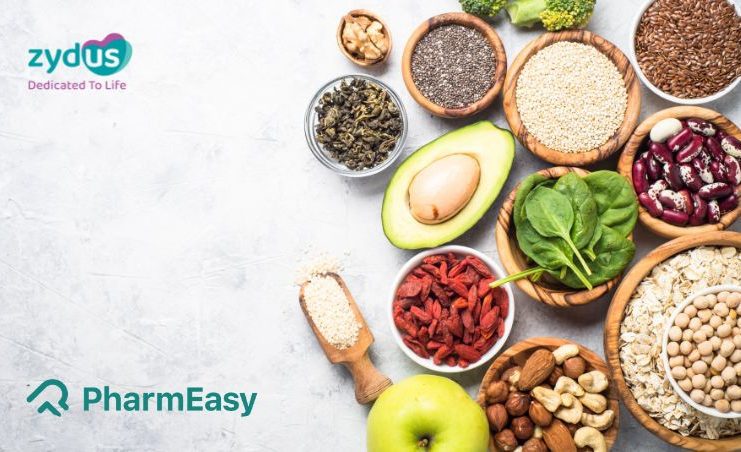Decoding The Right Diet For High BP
By Saksham Bhatia +2 more

Get,

to manage your symptom
Get your,


4 Cr+ families
benefitted

OTP sent to 9988776655



You’ve successfully subscribed to receive
doctor-approved tips on
Whatsapp

Get ready to feel your best.

Hi There,



Register to Avail the Offer
Send OTPBy continuing, you agree with our Privacy Policy and Terms and Conditions

Hi There,

Trusted by 4 crore+ families

OTP sent to 9988776655



You have unlocked 25% off on medicines




Code: NU25

By Saksham Bhatia +2 more
No diet discussion for High Blood pressure is complete without talking about the DASH diet.

DASH stands for Dietary Approaches to Stop Hypertension.
This diet is relatively simple and involves:
Reducing the consumption of food items that are high in cholesterol, trans fats, and saturated fat.
Another favourite variation of the DASH diet is the DASH-Sodium diet. This diet refers to cutting the sodium intake per day (to about 2-3 teaspoons, 1500 milligrams). While this reduction doesn’t need to be immediate, you can gradually reduce the sodium intake till your body adjusts to this prescribed goal.
Table of Contents
Consult a dietician or doctor before you put yourself on a DASH diet. That’s because he/she will accurately be able to tell you what should be your calorie intake per day to maintain a healthy lifestyle.
Simultaneously, specific foods that you need to avoid include:
Many doctors also recommend a Mediterranean Diet to keep blood pressure and heart ailments at bay.
Some common traits of this diet include:
Many attribute the benefits of this diet as the sole reason for a low rate of heart diseases in the Mediterranean countries. However, the American Heart Association suggests that further studies and experiments need to be conducted to quantify the benefits of this diet.
Also Read: Can Dehydration Cause High Blood Pressure? A Research-Backed Examination
Many dieticians also suggest tracking how many calories you are eating and drinking per day. Write down whatever you consume each day, this also includes jotting down the portion sizes. It is said that this is one of the best ways to enlighten yourselves about much you are consuming. On the basis of this analysis, you can then work out a plan – on reducing the calorie count and the portion size and finally your blood pressure too!
Also Read: What is the BRAT Diet? Breaking Down its Pros and Cons
Disclaimer: The information provided here is for educational/awareness purposes only and is not intended to be a substitute for medical treatment by a healthcare professional and should not be relied upon to diagnose or treat any medical condition. The reader should consult a registered medical practitioner to determine the appropriateness of the information and before consuming any medication. PharmEasy does not provide any guarantee or warranty (express or implied) regarding the accuracy, adequacy, completeness, legality, reliability or usefulness of the information; and disclaims any liability arising thereof.
Links and product recommendations in the information provided here are advertisements of third-party products available on the website. PharmEasy does not make any representation on the accuracy or suitability of such products/services. Advertisements do not influence the editorial decisions or content. The information in this blog is subject to change without notice. The authors and administrators reserve the right to modify, add, or remove content without notification. It is your responsibility to review this disclaimer regularly for any changes.
References

Leave your comment...
Comments